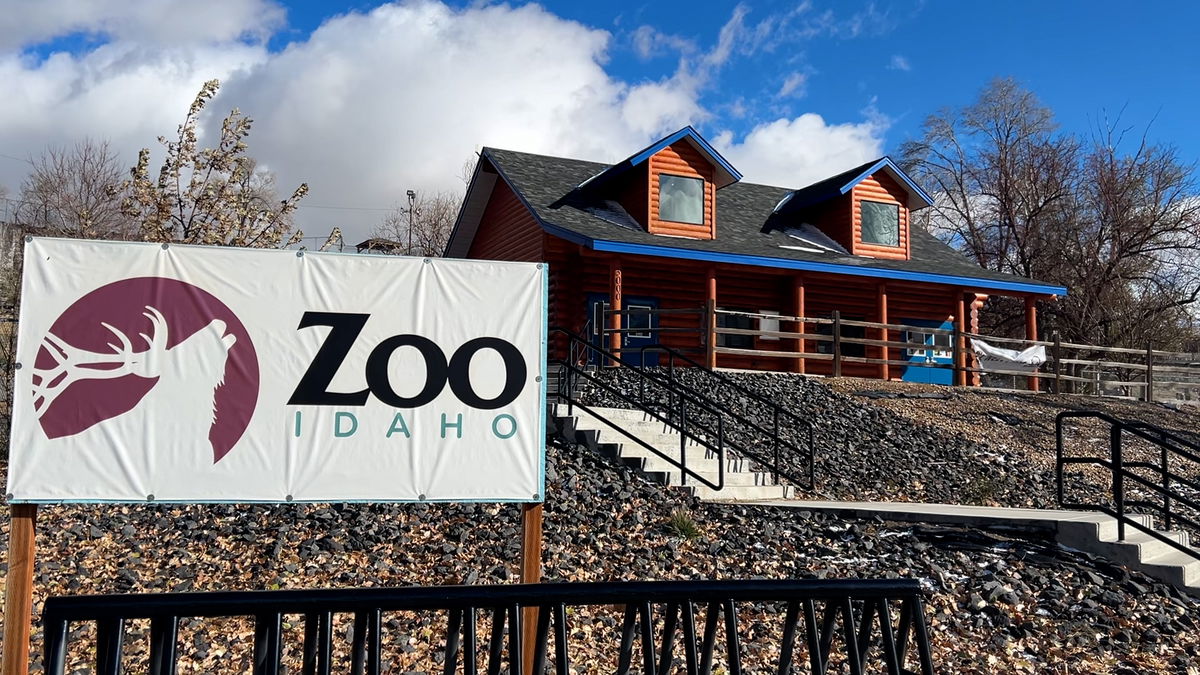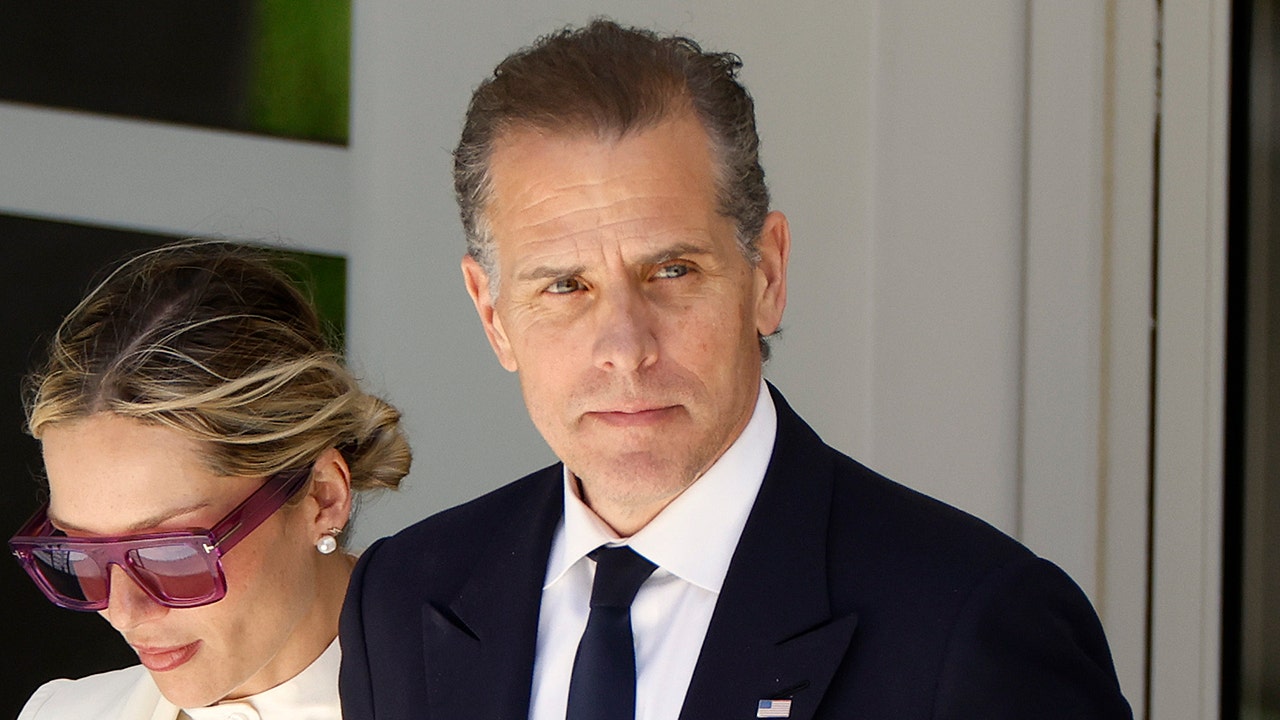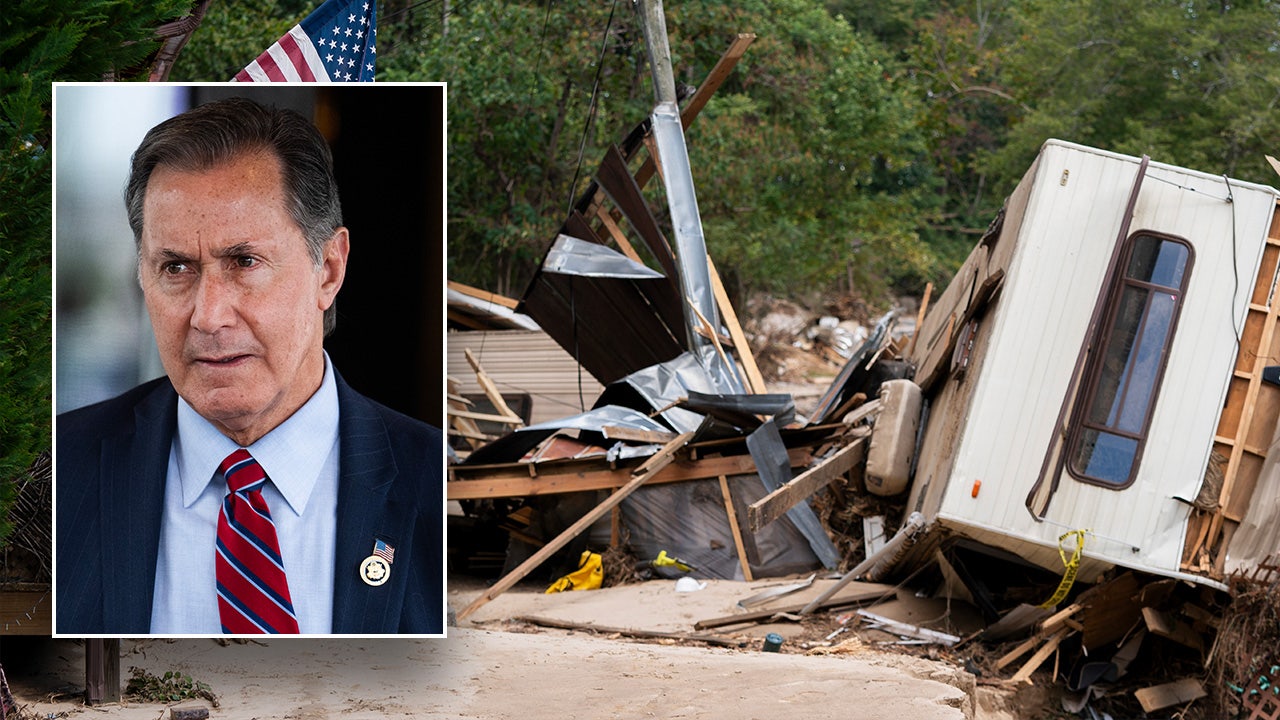Idaho
FBS or FCS? Idaho, New Mexico State Offer Competing Lessons

On October 31, 2015, 1-7 New Mexico State defeated 3-5 Idaho, 55-48, in a thrilling overtime game that seemed entirely beside the point.
The pertinent action transpired earlier that day at an IHOP in Las Cruces, N.M., where the two schools’ presidents and athletic directors gathered over breakfast to discuss their mutual, endangered fates.
Though an official decision was still months away, the writing was already on the wall that the schools’ future in the Sun Belt Conference was imperiled. The league wanted to go from 12 teams to 10, and the Aggies and Vandals, its newest football-only members, were also its most obvious candidates for exile. (The official sacking would come the following spring.)
Low-resourced and soon to be displaced, the question before the schools was whether—and if so, how—they should continue floating among the dregs of the NCAA’s top-tiered Football Bowl Subdivision.
Idaho president Chuck Staben wanted out. If he had his druthers, it would have been altogether out of intercollegiate football, which he felt was neither financially prudent for his school nor medically justifiable for any school. If the pigskin couldn’t be shed, Staben supported dropping the athletic department to the second-tiered Football Championship Subdivision, which the program had previously competed in 20 years earlier.
Staben believed he had a like-minded partner in New Mexico State president Garey Carruthers, whose house he was staying in that weekend and who had indicated to him and others an inclination for NMSU to transition to FCS. However, whereas Staben took a leading role in what was to come for Vandals athletics, Carruthers maintained a more neutral posture, entrusting the Aggies’ decision to a committee of school officials and alumni. They decided against it.
So, in the end, Idaho made the self-relegation move all alone, officially rejoining its erstwhile FCS league, the Big Sky Conference, in 2018. Staben lost his president’s job the following year, in no small part because of the controversy that arose over the move.
Since then, not a single other FBS school has joined the bandwagon. Rather, five other former FCS schools—Coastal Carolina, Liberty, James Madison, Sam Houston and Jacksonville State—have jumped up to FBS over that span. Meanwhile, FCS member Delaware confirmed this week its plans to join New Mexico state’s current league, Conference USA, for the 2025-26 academic year, becoming the first school to pay the NCAA’s new $5 million FBS entrance fee. (Prior to an NCAA Division I rule change last month, made effective immediately, it cost schools only $5,000.)
“I anticipated that there were going to be a few more schools that would go from FBS to FCS—New Mexico State being the primary one,” Staben said in a recent telephone interview.
Needless to say, New Mexico State is feeling vindication these days, with its 10-1 football program under second-year coach Jerry Kill having its best season since 1960. NMSU plays for the Conference USA title on Friday against 20th-ranked Liberty. Though Carruthers retired in 2018, the Aggies’ current athletic director, Mario Moccia, was in attendance at that IHOP breakfast session eight years ago.
“If we were to drop our football down a level, my argument was the perception of the institution would go down,” said Moccia, who previously served as AD at Southern Illinois, an FCS school. “There are 133 teams in the FBS. The only more exclusive club is the United States Senate and we’ve got this thing in Las Cruces. Let’s embrace that. Giving that up is difficult. I think you want to stay on as long as possible.”
Though surprised others haven’t followed along—at least thus far—Staben finds easy vindication these days in Idaho’s controversial decision at the time. Despite certain doom-and-gloom prognostications, the school’s athletic department continues to operate fully funded. And its football program, after a few losing seasons in the Big Sky, has returned to its long-ago winning ways. Idaho sold out its final two home games of the season, something it had not accomplished since the early 90s. On Saturday, the 8-5 Vandals are scheduled to play Southern Illinois in an ESPN2-televised, FCS playoffs second-round game.
Like Staben, former Sun Belt commissioner Karl Benson says he also figured another school would have followed Idaho’s lead, although he would have put his money on Louisiana-Monroe, a Sun Belt bottom-feeder that spent the least of any public FBS athletic department in 2021-22.
Sure enough, at a press conference earlier this week, the question about dropping down was put to ULM athletic director John Hartwell, following the school’s decision to fire football coach Terry Bowden after a 2-10 season. To be precise, a reporter was midway through asking the question before Hartwell quickly interjected to avow that FCS was “not an option” for the Warhawks.
College sports Russell Wright is all too familiar with this reaction.
Prior to Idaho’s transition, Staben had enlisted Wright’s firm, Collegiate Consulting, to conduct an operational study of the tradeoffs involved in moving to FCS. Since then, Wright says he has pitched doing similar studies for other similarly positioned FBS schools, including Louisiana-Monroe, but found no takers.
Aside from prestige and ego, Russell says the primary reason why schools aren’t interested in diving deeper into the matter is because of the presumed revenue consequences in giving up the chase: donor support, conference television revenue, College Football Playoff distributions and football buy-games.
Moccia said that the value of buy-games alone can make all the difference. Earlier this month, New Mexico State beat Auburn, which had paid NMSU $1.85 million for what was supposed to be an easy victory. Had NMSU been an FCS school, Moccia said, it would have been lucky to have made a quarter of that purse.
Tom Wistrcill, the Big Sky commissioner, says FBS school leaders are typically much less interested in pondering the other side of the ledger.
“The additional revenue in some of those FBS conferences gets eaten up so quickly by coach salaries and travel,” said Wistrcill, who served as AD at Akron from 2009 to 2015. “It gets lost in the shuffle the fact that expenses are going to rise and you are going to be expected to come up with more and your donors are going to have to come up with more money.”
(Idaho, for example, budgeted $3.22 million for football this fiscal year, less than half of what Akron, the lowest-spending FBS school, spent on the sport in 2021-22.)
To be sure, a school cannot simply downgrade its football program with finger snaps.
“You can’t do it autonomously, you can’t do it on an island, because it impacts all of your sports programs, especially if that existing conference says you have to play all of our existing sports in our conference,” said Wright.
Moccia says one of New Mexico State’s biggest concerns with dropping down was that there was no other FCS school within a drivable distance.
“It wasn’t like we were going to save money,” Moccia said. “We were still going to fly everywhere.”
Rob Spear, the former Idaho athletic director, argues its FCS success story was neither predictable at the time nor is it replicable now. For one, Spear notes, it was critical that Idaho already had FCS history, along with geographic rivalries with existing Big Sky members like Montana and Montana State.
“Idaho is a unicorn,” said Spear, who opposed the transition to FCS and had a falling out with Staben over their competing views. (Spear was fired in 2018 over his handling of a sexual assault complaint made against a football player.) Once Idaho’s fate with the Sun Belt became clear, Spear advocated for the university to help form a new FBS conference of land-grant schools west of the Mississippi; he recalled broaching the idea at the 2015 IHOP gathering.
In this current era of realignment, will it even matter whether a school is at the bottom of FBS or at the top of FCS?
“I feel that the window is closing, whether the NCAA is going to put even more strict measures on what (schools) would have to pay and do,” said Moccia. “It is like the Raiders of the Lost Arc when Indiana Jones slides under the door and reaches his hand back to get his hat. That hat is the FBS.”
For Staben, the more apt FBS analogy might be the giant boulder that threatens to steamroll Indiana Jones. This is why he finds the recent FCS-to-FBS converts especially “shortsighted.”
Whatever the future of college sports, he says, “the big boys are going to take as much revenue as they can and Group of Five will look a lot more like FCS programs than they even look today. You are stupid to transition to something that will look like where you just came from.”
Eventually, Staben remains convinced, the FBS bottom-feeders will be compelled to face the gravity of big-time college football and make some kind of drop.
“I actually think the smarter move and correct tactical move would be to eliminate football,” said Staben. “And I think that is what is going to happen.”

Idaho
In Idaho, special education departments face parent complaints, staff shortages and budget gaps – East Idaho News

(Idaho Ed News) — School districts statewide are facing a bevy of challenges as they strive to provide a free and appropriate public education to students with disabilities.
Special education staffing shortages and turnover are perennial issues. An $80 million special education budget deficit means schools have unmet needs. And complaints from parents about districts’ special education programs are on the rise.
RELATED | Special education parents, who say the system is failing their kids, take matters into their own hands
Still, schools must provide an equitable education — and that’s according to federal law. When they fall short of their duties — or when parents allege they have — it can lead to state and federal inquiries and lawsuits, which further drain school resources.
State education leaders have a few solutions in mind to ease staffing and financial hurdles — like an apprenticeship program for special education teachers-to-be, and a proposal to rethink school funding with special education students in mind. They’re also building up resources to help school leaders and parents become better partners.
It’s too early to say how helpful those initiatives will be. For now, schools are left to grapple with the status quo — and recruiting and retaining special education staff is among the most pressing problems.
Special education staffing woes persist at district and state levels
Idaho has faced special education staffing shortages every year since 2002, according to federal data.
Look on any given school district’s job openings page, or on the state’s edjobsidaho, and there will most likely be one or more special education vacancies.
That’s the trend nationally, too. Special education teachers make up 12% of the teaching workforce but amount to 24% of all teacher job postings, according to Georgetown University’s Edunomics Lab research center.
In Idaho, districts are hiring special education teachers with alternative authorizations in order to fill vacancies; they comprise 11% of special education teachers statewide.
To help with staff shortages, the state department has developed a special education teacher apprenticeship program that aims to ease the path to teacher certification for those who already work with students, like paraprofessionals. But so far, only one district has hired a special education apprentice, according to Mike Keckler, the spokesperson for the State Board of Education.
Marguerite Roza, director of the Edunomics Lab, said another way to boost recruitment and retention is with salary increases. In Hawaii, for example, special education teachers are paid an additional $10,000 on top of their base salaries.
But in Idaho, where districts are already strapped for cash, that may not be a feasible solution.
In the meantime, Idaho’s special education staffers tend to have higher student caseloads than their peers in other states. Only Idaho and Ohio have fewer than 20 special education staffers per 200 students — as compared to more than 60 in some states, according to Edunomics Lab research.
Idaho is also facing a high rate of shortages and turnover at the state level. There are 10 special education staff members at the Idaho Department of Education, and nine of them are new within the last five years, according to Scott Graf, the IDE communications director. Four are new in the past two years.
And the IDE’s special education department’s turnover rates have more than doubled in the last two fiscal years.

At the local level, Julian Duffey, the special education director at Jefferson County School district, said positions like his are known for “high burnout” and turnover as well.
On top of staffing shortages and turnover, districts are also navigating budgetary gaps that might increase as more students qualify for special education services.
Special education enrollment and costs are linked. In Idaho, that could soon lead to greater budget shortfalls
Nationally, special education enrollment is trending up, even as overall student enrollment trends down. That means on average, schools are identifying more kids as qualifying for special education, according to Edunomics Lab research.
In some states, more than 20% of students qualify for special education. Idaho and Hawaii are outliers for having the lowest special education enrollment rates in the nation, with just 12% of students qualifying for services.

The varying rates call into question whether disability diagnoses are objective or subjective, which could mean schools are over or under-diagnosing students in need, Roza said in a webinar presentation.
And Idaho falls into the latter category, according to the results of a federal inquiry. For years, Idaho was setting too high of a bar for which students could qualify as having a “specific learning disability,” a category of disorders including dyslexia.
That tracks with national research from the Edunomics Lab, which singled Idaho out for having one of the lowest qualifying rates for specific learning disability in the nation.

The state has now changed its special education manual to address the issue — making a minor but significant tweak that could lead to thousands more Idaho students receiving special education services.
That means special education enrollment will tick up — and so will costs.
Idaho Education News data analyst Randy Schrader contributed to this report.
Originally posted on IdahoEdNews.org on November 19, 2024
=htmlentities(get_the_title())?>%0D%0A%0D%0A=get_permalink()?>%0D%0A%0D%0A=htmlentities(‘For more stories like this one, be sure to visit https://www.eastidahonews.com/ for all of the latest news, community events and more.’)?>&subject=Check%20out%20this%20story%20from%20EastIdahoNews” class=”fa-stack jDialog”>
Idaho
Idaho Wine: The Holiday Party Trick You Never Knew You Needed

A few years ago, during a visit to Idaho and the wine region that was newly taking shape there, three key takeaways took hold in my mind:
- Idaho has abundant sources of natural water to hydrate its vineyards. This means that, generally speaking, vineyards there do not struggle for water nor do they need to be irrigated.
- Idaho’s wine regions are burdened unfortunately by the political designation of “Idaho,” even though its climate and geography share similarities with its border neighbors of Oregon (and the Snake River Valley AVA, or American Viticultural Area) and Washington state (and the Lewis-Clark Valley AVA).
- I should buy real estate in Idaho.
Famous last words, indeed.
Some eight years later, a reassessment of the scene, pre- and post-COVID: Idaho is still blessed with abundant water, though the supply is reasonably stressed by the spike in population during and after COVID. Idaho wine is still burdened by the non-traditional (for wine) designation of “Idaho,” though plenty of positive developmental strides have been taken to position the local industry favorably in consumers’ and the media’s minds.
And I still should have bought real estate in Idaho. (See “population spike” and “abundant water” as rationale, but that’s another story.)
Snake River Valley American Viticultural Area in Canyon County, Idaho
When the opportunity arose recently to taste through a series of wines from Idaho, I agreed enthusiastically. Then, when the shipment of wines arrived, my enthusiasm grew even more. The shipment included a sparkling wine (under a crown cap! from 2019, no less) that highlighted Idaho’s 3100 river miles in the state; a Chardonnay with a label telling exactly the kind of story your imagination wants to hear about Idaho (think Basque immigrant, sheep herders, and a fateful gulch); and a Petit Verdot “Trout Series” (because Idaho) that carried me through the food prep for the dinner I’d serve for friends who’d come to taste through the wines with us.
The scene was set, and bolstered in Idaho’s favor even further by the guest who’d grown up in Idaho as a boy and was ready and more than willing to give Idaho wine the benefit of the doubt. (See “unfortunate political designation,” above.) Let me cut to the chase, though, with three new takeaways that took hold in my mind that night:
- The wines we tried did Idaho proud.
- These wines would stand on their own, whether they’re labeled “Idaho” or not, and whether or not that prejudices consumers. I’d encourage consumers to take (and taste) them at face value, so to speak. This Chardonnay right here in my glass. That Tempranillo in its own right. This other Petit Verdot that is simply delicious, not to mention versatile. They measure up. Period.
- I would still buy real estate in Idaho. More to the point, I would buy real estate in Idaho that would turn into vineyards.
The truth is that I have no idea how easy it will be for readers of this column to find or buy or taste wines from Idaho. Believe me, I wish it were EASIER than whatever your answer is to that likelihood. Which means that readers are now officially assigned the task of ASKING for wines from Idaho from their favorite local bottle shop. You will most likely be looked at strangely — get ready for it — but I strongly encourage you to hold your ground. These wines are good. They are reasonably priced. They are unusual. They will start a conversation. You can put them in brown paper bags for a holiday party and pour them blind in comparison to a more common expression of any of these grapes, and the Idaho wines will win. And then you get to be victorious, and you’ll be known as the person who brought the most interesting wine to the table.
Who wouldn’t want to come to THAT holiday party this season?
Count me in. Especially if you’re pouring any of these favorites, all from the Snake River Valley AVA of Idaho.
2019 3100 Cellars “Whitewater” Sparkling Wine
2023 Dude DeWalt Cellars Chardonnay
2021 Hat Ranch Winery Tempranillo
2020 Trout Series Petit Verdot by Sawtooth Winery
Idaho
How Zoo Idaho prepares for the winter – Local News 8

POCATELLO, Idaho (KIFI)– Unlike other zoos, Zoo Idaho’s native species need little preparation for the harsh cold of Idaho’s winters.
Zoo staff prepare most animals to spend the season outdoors–they will put a de-icing agent in the animals’ water supplies and straw bedding on concrete flooring in buildings.
“For the most part, they’re made for this type of weather,” said Peter Pruitt, superintendent of Zoo Idaho. “We’re not dealing with exotic animals from other locales.”
Some migratory birds will be kept indoors during the coldest days, but animals like bears, bison, and elk will brave the elements outside.
Zoo Idaho is closed for the season, but they will be holding some winter holiday events. To learn more you can visit Zoo Idaho’s website.
KIFI Local News 8 is committed to providing a forum for civil and constructive conversation.
Please keep your comments respectful and relevant. You can review our Community Guidelines by clicking here
If you would like to share a story idea, please submit it here.
-

 News1 week ago
News1 week agoHerbert Smith Freehills to merge with US-based law firm Kramer Levin
-
/cdn.vox-cdn.com/uploads/chorus_asset/file/25724877/Super_Nintendo_World.png)
/cdn.vox-cdn.com/uploads/chorus_asset/file/25724877/Super_Nintendo_World.png) Technology1 week ago
Technology1 week agoThe next Nintendo Direct is all about Super Nintendo World’s Donkey Kong Country
-
Business6 days ago
Column: OpenAI just scored a huge victory in a copyright case … or did it?
-

 Health6 days ago
Health6 days agoBird flu leaves teen in critical condition after country's first reported case
-

 Business3 days ago
Business3 days agoColumn: Molly White's message for journalists going freelance — be ready for the pitfalls
-
Politics1 week ago
Editorial: Abortion was on ballots across the country in this election. The results are encouraging
-
World7 days ago
Sarah Palin, NY Times Have Explored Settlement, as Judge Sets Defamation Retrial
-

 Politics2 days ago
Politics2 days agoTrump taps FCC member Brendan Carr to lead agency: 'Warrior for Free Speech'





















